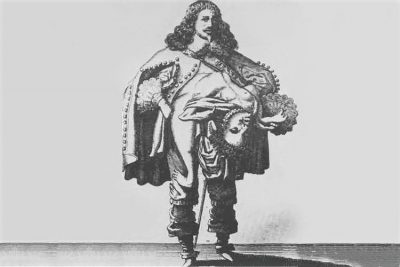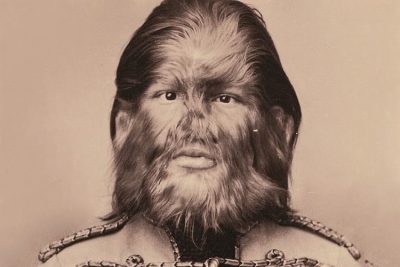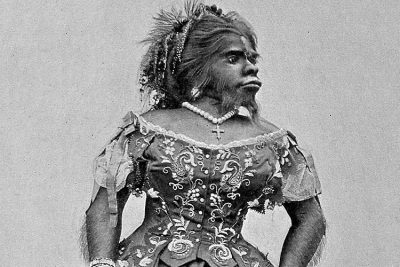Chang and Eng Bunker: The Famous Congenitally Fused Twins That Brought the Term ‘Siamese Twins’ in Vogue
Share

Chang and Eng Bunker in a suit. (Wellcome Images)
Called conjoined twins or Siamese twins, the birth of these physically connected set of children is a rare phenomenon; but these have been the subject of discussion whenever a pair is born. Do you know where the term Siamese twins originated? There is an interesting story related to it and the two individuals – Chang and Eng Bunker – have unarguably been the most prominent conjoined twins. Their anomaly has been documented in great detail in many medical records across the globe.
Early life of Chang and Eng Bunker
Born on May 11, in the year 1811, the Bunker brothers came into the world together in modern-day Thailand. This Southeast Asian nation was formerly known as Siam until the late 1930s after monarchy ended in the country. Chang and Eng were born to parents of mixed Chinese, Thai and Malay descent. Their father Ti-eye was a fisherman in Mekong village, while their mother Nook looked after the children. Their mother had named her twin sons in and Jun, which was later, anglicized to Eng and Chang respectively. The twin brothers were born in a very large family with seven other normal siblings, which were nothing like the two of them. Surprisingly, only Chang and Eng were fused together at the chest, which made free movement quite a challenge for them.
Right from the time they were born, they were physically connected together in such a way that they always lay side by side, facing each other. During their childhood days, their mother never treated them differently and brought them up, along with their siblings as normal individuals. That made the Bunker brothers fiercely independent and helped them lead a normal life. Their mother encouraged them to participate in physical activities like running, stretching and swimming, which in turn, would help their connecting cartilage to lengthen. This would allow them to move more freely and walk more easily, while still being joined to each other. And it helped the twins to a great extent. The tissue expanded as the twin brothers grew up and allowed them easy movement, so much so that they could even row a boat together all on their own.
Physical appearance of the Bunker Brothers
Though the twin brothers were attached at the breastbone by a soft tissue, their bodies were distinctively different. Each organ they had was separate and functional in its own way, except for a fused liver. They were connected by a four-inch long connective tissue or cartilage at the sternum, which as infants, held them very close together. The tissue stretched, but it never separated them apart. The cartilage, which ran parallel to their breastbone, was somewhat tubular in shape and the band measured approximately two inches in diameter and eight inches in circumference. The connecting tissue was thick and quite flexible, allowing them a certain amount of freedom. From their own perception point, Chang was the one on the left side and Eng was the one on the right. They stood five feet and two inches tall. Chang was shorter than Eng by an inch and wore heeled footwear to make up for the difference in their height.
Growing up years and anecdotes from the life of the twins
Incidents of twin children being born attached to each other were not new in the world, as many other (lesser-known) conjoined twins were born in the world before the Bunker brothers. But people got curious when it came to Chang and Eng. The news of their birth reached far and wide, evoking all kinds of reactions from the villagers.
In the early years, the birth of twins was believed to bring bad omen and many people wanted the Bunker twins dead. Some also came up with bizarre ideas on ways to separate the two young boys, but they and their mother remained unfazed. When a cholera outburst in Thailand claimed the lives of their father and five of their siblings, Chang and Eng together became the sole breadwinners of the family. Along with their mother, they raised ducks and traded the preserved eggs to run their home, after they ended their stint at a cocoa bean manufacturing unit.
Though like other villagers, King Rama II of Siam was also in favour of putting the twins to death, his successor King Rama III came around to the idea of having them as his personal emissaries. He paid their family handsomely to keep the Bunker brothers for his diplomatic courtroom tasks as his representatives. Soon, their fame spread beyond their little fishing village and Chang and Eng Bunker started to travel as respected citizens. It was on one of their excursions that a Scottish merchant Robert Hunter spotted the twins and convinced King Rama III to allow them to go on an exhibition tour of the United States of America for three years from 1829 to 1831. Abel Coffin, an American sea captain and a friend of Hunter’s joined him in the idea and that is how the Bunkers’ journey into the outside world began.

Chang and Eng, conjoined twins. (Wellcome Images)
The Bunker brothers as oddities
Upon reaching Boston in August of 1829 with Coffin and Hunter, the Bunker brothers were presented at circuses as sideshows and human oddities. In those times, people born with anomalies, birth defects or unusual appearances were either left to die or picked up by road show organizers, who presented them as freaks to make extra cash. And Americans, too, paid to watch two individuals from a far away Asian kingdom, congenitally connected to each other, putting up their antics on display. The Bunker brothers travelled with Hunter and Abel and presented their rare traits to many an audience across many American as well as European countries and received not just a celebrity status and money but also respect. The exhibition of the Bunker brothers was a hot topic of discussion wherever they went, thus eventually giving rise to the term ‘Siamese twins’ (the term later stuck with conjoined twins from any part of the world).
The professional life of the Bunker brothers
Though the Bunker brothers were to return to Siam after three years, they dropped the plan and continued to live in the US, where they could earn enough money for themselves. They worked for Hunter and Coffin for three years and later joined P.T. Barnum’s troupe, where they showcased their strength and dexterity, performing stunts and tricks. The Bunkers also entertained royalty throughout the world in Asia, Europe and America, performing acrobatics and sleight of hands for their regal spectators. Whenever the Bunkers performed their feats, they drew large audiences and their shows ran packed houses. One of their performances and their willingness to settle in the United States also gave them their surname ‘Bunker’, which they borrowed from a spectator, to become naturalized citizens of the country.

Wood engraving of Chang and Eng Bunker by H.S. Miller. (Wellcome Images)
After breaking away from P.T. Barnum, they travelled solo in their early twenties. They performed synchronized backflips and somersaults and presented acts that even normal individuals couldn’t accomplish. They answered the audiences’ curious questions at times and at other times, dismissed the ideas of medical practitioners in the audience that suggested their surgical separation. The twins made a good fortune but soon enough they were tired of their lives on the road and decided to put an end to it all and lead a quiet life in a remote township of Wilkesboro in North Carolina.
Marriage and later life of Chang and Eng
With the money they had saved, the Bunker brothers bought slaves and a two hundred acre land for farming and the lives of the industrious twins as businessmen took off. At 31 years of age, Chang fell in love with Adelaide, one of the daughters of a landowner named David Yates. However, Eng had yet to develop such feelings for any woman. When Chang wished to marry Adelaide, Eng had no choice but to agree to wed Adelaide’s sister Sarah, so that they could settle down together at Mount Airy in North Carolina, without curious eyes prying on them all the time. Yates was reluctant to give away his daughters to the Bunker brothers initially, not because they were conjoined twins but because they were Asians. The marriage of the twins to the Yates sisters in the year 1843 probably became the first ever interracial wedding the state had ever seen.
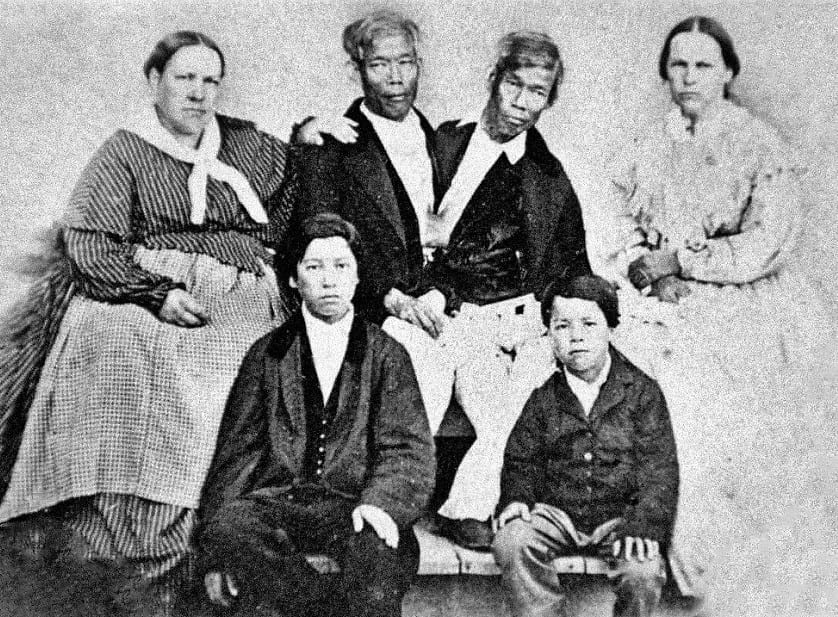
Chang and Eng Bunker with their wives and children. (Mathew Brady)
Though it was not easy for them to lead a normal life as married men, Chang and Eng Bunker were always under the abhorrent eyes of their neighbours, who discussed their sex lives more disapprovingly owing to their rare oddity. Some even went on to call their ways to procreate as incestuous and insulted the couples. Soon, the sisters started quarrelling and grew tired of sleeping in the reinforced bed together, where the twins slept in the middle flanked by their own wives to their sides. That led the Bunker brothers to build another house, close to their first one, where they took turns living in Chang’s home for three days, followed by a trip to Eng’s for the next three days. Between the two, Chang and Eng sired twenty-one children – Chang and Adelaide had ten children and Eng and Sarah had eleven. Though among the twelve daughters and nine sons, none were twins, two children were deaf-mutes and two died before they completed three years of age.
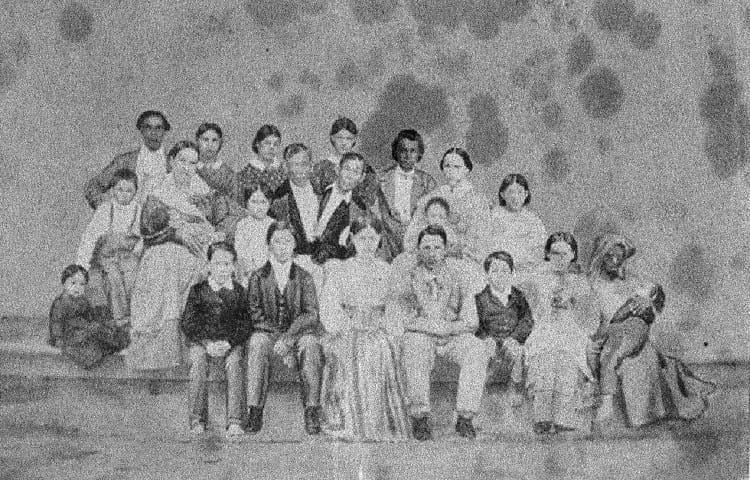
Chang and Eng Bunker with their wives and 18 of their 22 children. (unattributed / Syracuse University)
Death of the Bunker twins
After all the money was exhausted raising families, the Bunker brothers decided to return to show business again, this time with two of their children in tow. However, their magic had started fading away and people across the globe refused to believe the twins could be husbands and fathers. To many people, the idea was appalling and the twins started losing their audience, their fame as well as their money. After performing for more than four decades, the twins couldn’t showcase their oddity anymore, which led Chang to take to drinking heavily. In 1870, he suffered a stroke, which paralyzed the right side of his body, where Eng was attached. Eng nursed his brother back to health, but Chang never fully recovered.
Their life spiralled out of control and only saw a downfall towards the beginning of the 1870s. Work kept lessening; tours had stopped, families were disturbed and the aftermath of the American Civil War had added to their miseries. On January 12, 1874, Chang was stricken with severe bronchitis and complained of stinging chest pains. His condition worsened and he passed away in his sleep in the wee hours of January 17. When Eng woke up, he panicked to see himself attached to his dead twin, while he was still alive. A desperate surgery to separate the dead twin was attempted by calling upon a doctor, but it was too late. By the time the doctor arrived three hours later, Eng had died too.
The bodies were taken to Philadelphia for autopsy, where it was revealed that Chang had died of a clot in his cerebral cavity due to the stroke, while Eng had died of fright. An examination of their connecting cartilage proved that though it was the Bunker brothers’ wish to be separated later in life; it could have been a fateful decision, had they taken it, upon their return to showbiz. The Bunker wives permitted the state to perform a detailed autopsy on the twins, which later revealed that although the twins had separate organs; they shared conjoined hepatic vessels owing to their fused liver. It is doubtful whether doctors could have successfully been able to separate the brothers, without causing the death of one of the twins due to excess blood loss.
Legacy of Chang and Eng Bunker
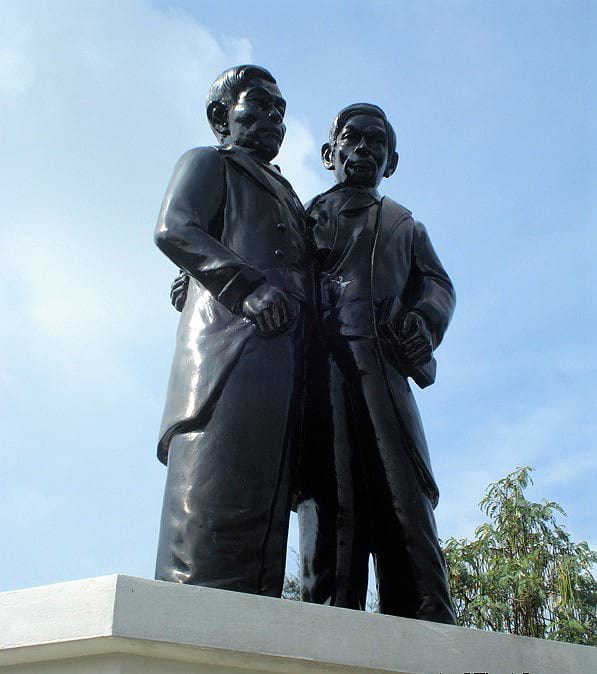
Chang and Eng Bunker memorial bronze statue in Thailand. (Poakpong / Flickr)
Buried in a common grave at a cemetery in White Plains Baptist Church in Surrey County, the medical marvels and the original Siamese twins, rest peacefully after a fulfilled life of adventure and risks. A plaster cast of their torso is displayed at the Mutter Museum in Philadelphia, Pennsylvania, where people visit in the hundreds to see the rare humans. The twins have close to 1,500 descendants, who earlier lived in secrecy, but have now started to come out at reunions as proud members of the odd yet reputed Bunker family. With their abnormal appearance and their zest for life, the inseparable Bunker brothers left the world awestruck.
Enjoyed this article? Also, check out “The Extraordinary Conjoined Twins: Lazarus and Joannes Baptista Colloredo“.
Fact Analysis:
STSTW Media strives to deliver accurate information through careful research. However, things can go wrong. If you find the above article inaccurate or biased, please let us know at [email protected]
